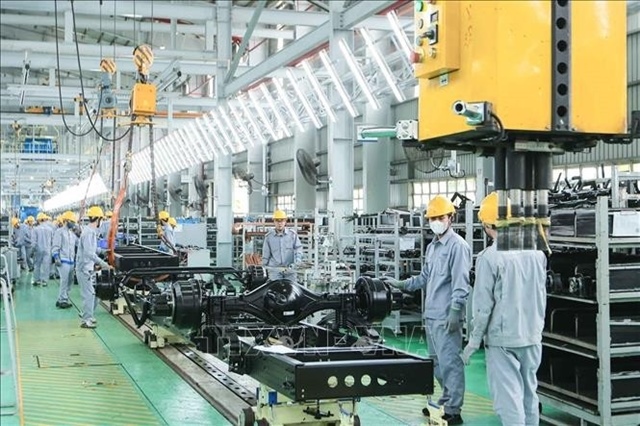Wood industry urged to adopt veneer
Wood industry urged to adopt veneer
There is a big potential for Viet Nam's wood processing industry to expand its share in both foreign and domestic markets, both foreign and local experts concur.

They were attending a seminar held on Saturday on the sidelines of the Viet Nam Furniture and Home Furnishing Fair.
Viet Nam's wood processing industry has enjoyed strong growth over the past 10 years, with export value increasing at an average of 15.5 per cent a year.
The industry earned US$4.6 billion from exports last year, a year-on-year increase of 17.9 per cent.
The country is currently ranked first in Southeast Asia, second in Asia and sixth the world in terms of wood export turnover.
The world furniture demand could reach $300-400 billion a year in the next 10 years, Heiko Woerner, Technical Advisor to the Vietnamese-German Forestry Programme, said.
He added that Viet Nam's furniture export now meets just two per cent of the world demand. Therefore, Vietnamese firms have more room to boost exports.
Per capita consumption of furniture products in the domestic market remained low compared to other countries, so a great opportunity exists for wood processing firms to boost sales in the domestic market as well, he said.
However, the local wood industry faces several challenges, including wood material shortage and poor design capability, he said.
Woerner said as much as 80 per cent of wood material used in furniture production in Viet Nam was imported. The country spent $1.5 billion on importing wood material last year.
Huynh Van Hanh, deputy chairman of the Handicraft and Wood Industry Association of HCM City (Hawa), said: "Most indoor and outdoor furniture is currently made of solid wood."
Hanh as well as other delegates at the seminar urged local wood processing firms to enhance the use of veneer in their products to minimise the use of wood material and conserve natural resources.
Veneer is a thin slice of wood cut or peeled from a log. It is adhered to another surface of substrate, which can be made from wood or other materials like stainless steel and aluminum.
The veneering technology makes it possible to get 800sq.m of veneer from one cubic metric of wood. By this way, firms can produce more products out of the same lumber used to create one solid wood product.
If conserving natural resources is a priority, then furniture made of wood veneer would be a great choice, Hanh said.
"Composing veneer sheets of different geometries, wood species, etc with one surface can result in a very special wood pattern or picture," said Dieter Fink of German firm Applikatio.
Veneer award
The Viet Nam-Germany Forestry Programme, in collaboration with the ACIAR project and Hawa, has instituted the nation's first Veneer Award, it was announced at the seminar.
They said the award aims to promote veneer use and innovation in Viet Nam's wood processing industry.
It also seeks to support the local wood processing industry in shifting from using solid wood to veneer in their production, helping Viet Nam's furniture and interior design industry become more competitive.
The competition is open to all local designers who can present a practical solution that has not been submitted before.
The products submitted should use veneer as a main material – either for accessories (gifts, lamps, toys, and decors) or furniture (desks, chairs, shelves and wardrobes).
vietnamnews
























